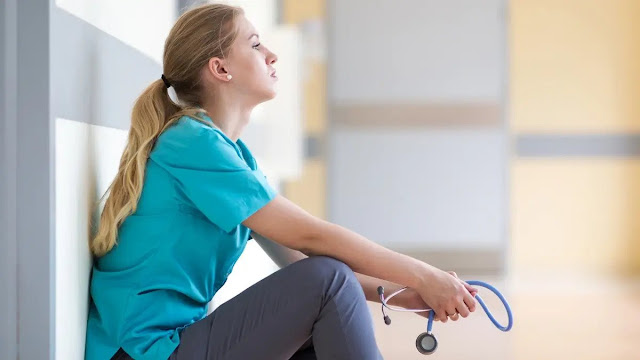A few weeks ago I heard a doctor tell me, “That is a five-shower case.” My mind automatically started to think about what physiologic cascading effect he might be referring to. After witnessing my perplexed face, he gently responded by saying “after five showers, I might be able to stop thinking about that one constantly.” There was something so comforting in hearing that I would not be alone in my confusion, sadness, or insufficiency towards the events that had transpired during that shift.
I had a small degree of peace that occurred thinking of the visual of showers clearing out my headspace from thinking and dreaming about work. I think so often we forget to allow ourselves the space to acknowledge that our work can be emotionally draining and difficult to process through and that we are not the only ones processing this response.
It has always been interesting to me which cases stir up an emotional rise, and which horrific stories turned out to be unpredictably easy to move on from. Sometimes the sad cases for other people make me question whether or not I have the capacity for an emotional response anymore. Then a seemingly standard patient will cross my path and something about their story makes it hard to shower off.
After working in a critical care setting for multiple years, most nurses carry at least one or two patient stories near to their hearts for years to come. However, our nursing culture has taught us to normalize the unthinkable, and quickly pick up the pieces and move on to the next patient. Most call it compartmentalizing. The longer you do this - the easier (at times) it becomes and it even becomes our norm. Spilling over into our personal lives more often than not. Or, maybe a more likely scenario is that many nurses don’t talk about these stories because it feels too personal. After seeing and witnessing some of the most gut-wrenching and raw moments, it almost feels insincere to share their stories with complete strangers of the patient. After all, how can you put into words the gravity of watching air leave someone’s lungs forever, and see it strip part of the life away from their family while watching it happen?
I have come to realize that I get to participate in some of the most sacred and horrifyingly tender moments in some people’s lives. They are the moments that movies layer with soft music and a dramatic crescendo to help produce an emotional reaction for the audience. Unfortunately, when you are in the room with the patient and watching the scene unfold before your own eyes, it doesn’t need music to cause the feelings to swell inside of you. They are the moments that have small details that will be etched into your mind for weeks to come. The sound of a cry, the position of the hands, the words families choose to speak during the remaining few moments with a loved one, or the lingering eye contact that you had with the patient right before they lost consciousness.
These images have woven their way into my dreams and my subconscious thinking for short periods after caring for the patient, and so often they are moments I don’t want to share with anyone else, because although I don’t see it as a burden to carry, it feels like I witness such an intimate moment of closeness with that family, that it isn’t my story to share.
The moment on replay for this five-shower case occurred when the patient ripped off her BiPAP, grasped at my arms, and looked me directly in the eyes saying “what you are doing isn’t working. Change something.” And I couldn’t.
We were doing everything we could at that moment to help her, but it just wasn’t enough. We debriefed everything that had occurred later that night, and the “what if” questions began flowing. What if we could have gotten better IV access a few minutes sooner? What if we could have given more fluids and meds seconds earlier? What if the family had called 9-1-1 twenty minutes quicker? A lot of the five shower stories make you question your competency as a provider when you become fixated on these questions. Did I do enough? Could another nurse have kept the patient alive?
Five showers. Sometimes time and leaning against a wall with hot water pouring over the body can wash off more than just small dirt particles. I hope we get to a point as collective healthcare providers that we allow for a space to process and grieve the intense interactions we often witness and stop downplaying the notion that the “strong ones” don’t need to pause and reflect. Each individual absorbs emotional reactions and attachments to very different stories, and we need to have empathy for allowing them the ability to feel whatever reactions it might stir. Sometimes it is sadness, other times anger, but I have also seen some nurses completely shut down in a response to a positive emotion that they might not have received in their own walk of life. Maybe they just need five showers to process through it and come out on the other side as a more whole, and complete human.
Source: nurse.org







